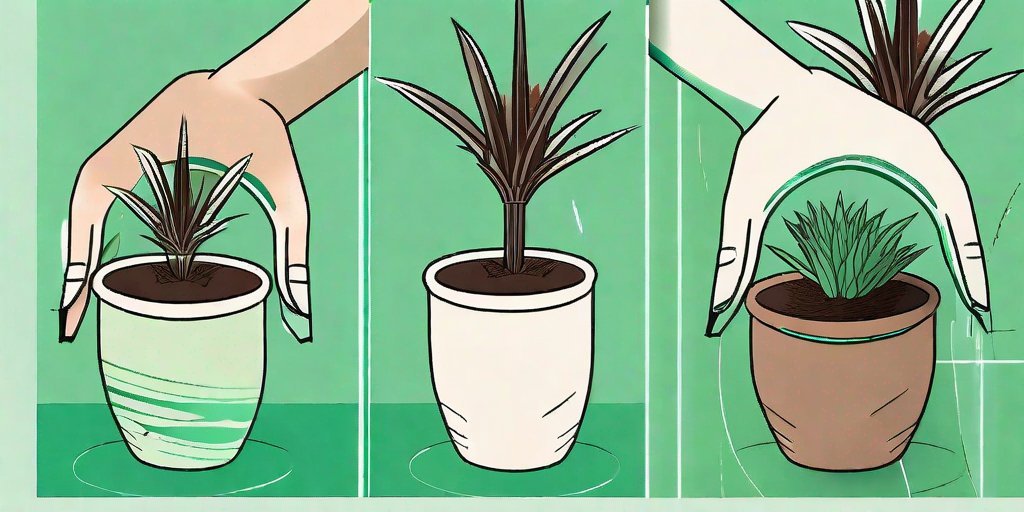
Yucca plants, those spiky, architectural wonders that grace our gardens, are not just a pretty face. They're tough, resilient, and can survive in the harshest of conditions. But what happens when you need to move your Yucca from one spot to another? Fear not, fellow green thumbs, for this guide will lead you through the process, from the initial uprooting to the triumphant re-planting. So, grab your gardening gloves, and let's get started!
Understanding Your Yucca
Before we dive into the nitty-gritty of transplanting, it's important to understand what makes your Yucca tick. Yucca plants are native to the arid regions of the Americas. They're used to harsh sunlight, poor soil, and minimal water. This doesn't mean they're invincible, but they're certainly hardier than your average houseplant.
There are around 40 species of Yucca, each with its own unique characteristics. Some are small and shrub-like, while others can grow to the size of a small tree. Regardless of the species, all Yucca plants share certain traits - they have tough, sword-like leaves, and most produce beautiful white flowers.
Yucca's Preferred Conditions
Yucca plants love sunlight - the more, the merrier. They can tolerate some shade, but they'll thrive in a sunny spot. As for soil, they prefer it well-draining and slightly sandy. They're not fussy about the pH level, but they don't like to have wet feet, so avoid waterlogged soil at all costs.
When it comes to watering, Yucca plants are a bit like camels. They can store water in their leaves and roots, so they don't need to be watered often. In fact, overwatering is one of the quickest ways to kill a Yucca plant. So, if you're the type of person who forgets to water their plants, a Yucca might be the perfect choice for you!
The Transplanting Process
Now that we've covered the basics of Yucca care, let's move on to the main event - the transplanting process. This might seem daunting, especially if your Yucca is on the larger side, but with a bit of patience and the right tools, you'll have your Yucca in its new home in no time.
Before you start, make sure you have the following tools on hand: a sharp spade, a pair of sturdy gloves (those Yucca leaves can be sharp!), a new pot or planting hole, and some fresh, well-draining soil.
Step 1: Uprooting Your Yucca
Start by watering your Yucca a day or two before you plan to transplant it. This will make the soil softer and easier to work with. When you're ready to uproot your Yucca, put on your gloves and grab your spade. Dig around the base of the plant, taking care not to damage the roots. Once you've loosened the soil, gently lift the plant out of the ground.
Step 2: Preparing the New Location
While your Yucca is enjoying a bit of freedom, prepare its new home. If you're planting it in a pot, make sure the pot has plenty of drainage holes and fill it with well-draining soil. If you're planting it in the ground, dig a hole that's twice as wide and just as deep as the root ball of your Yucca.
Step 3: Planting Your Yucca
Now it's time to plant your Yucca in its new home. Place the plant in the hole or pot, making sure it's at the same depth as it was in its previous location. Backfill with soil, firming it gently around the base of the plant. Water lightly, and voila! Your Yucca is successfully transplanted.
Post-Transplant Care
After the transplant, your Yucca might look a bit worse for wear. Don't panic - this is normal. The plant is just adjusting to its new home. With a bit of TLC, it'll be back to its spiky self in no time.
For the first few weeks after the transplant, water your Yucca lightly but regularly. This will help the roots establish in their new location. After that, you can go back to your regular watering schedule.
Keep an eye out for signs of stress, like yellowing leaves or a lack of growth. If you notice anything unusual, check the soil and light conditions. Remember, Yucca plants love sun and hate waterlogged soil!
FAQs
When is the best time to transplant a Yucca?
The best time to transplant a Yucca is in the spring or early summer. This gives the plant plenty of time to establish in its new location before the colder months set in.
Can I propagate a Yucca during the transplanting process?
Absolutely! If your Yucca has pups (small offshoots), you can separate these from the main plant during the transplanting process and plant them separately. Just make sure each pup has some roots attached.
My Yucca looks unhappy after the transplant. What should I do?
First, don't panic. It's normal for plants to look a bit stressed after a transplant. Check the light and soil conditions, and adjust if necessary. If your Yucca still looks unhappy after a few weeks, it might be worth consulting a local nursery or extension service.
Conclusion
Transplanting a Yucca might seem like a daunting task, but with a bit of preparation and patience, it's entirely doable. Remember, Yucca plants are tough - they're used to surviving in harsh conditions. So, don't be too hard on yourself if your Yucca looks a bit unhappy after the transplant. With a bit of TLC, it'll be back to its spiky, architectural self in no time.
So, what are you waiting for? Grab your gloves, sharpen your spade, and get ready to go from brown to green. Happy gardening!















